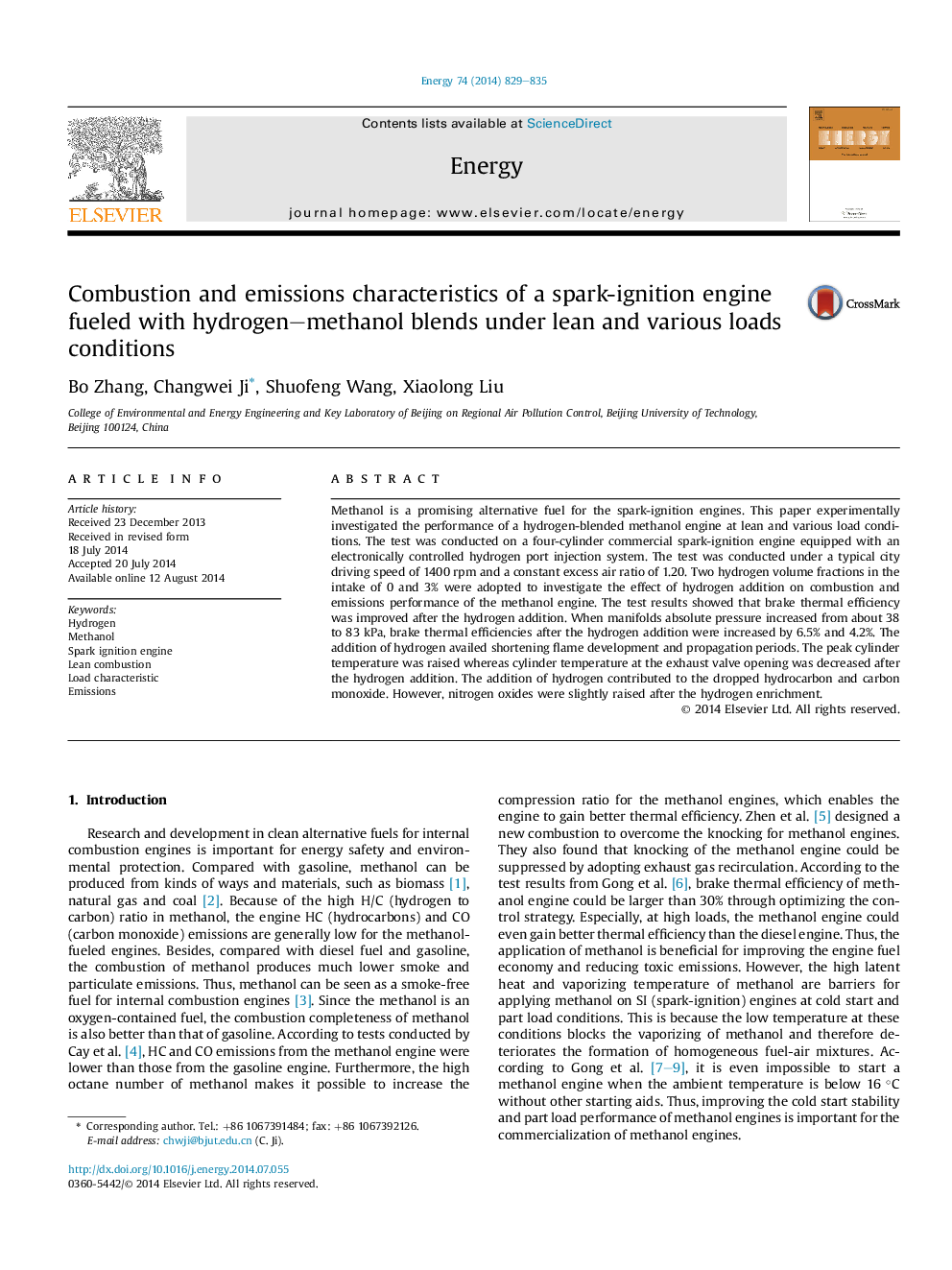| Article ID | Journal | Published Year | Pages | File Type |
|---|---|---|---|---|
| 1732514 | Energy | 2014 | 7 Pages |
•Load characteristics of a H2-blended methanol engine are experimentally studied.•H2 addition is more effective on raising engine efficiency at low loads.•Flame development and propagation periods are shortened after H2 addition.•H2 enrichment contributes to the smooth operation of the methanol engine.•HC and CO emissions from the methanol engine are reduced after H2 addition.
Methanol is a promising alternative fuel for the spark-ignition engines. This paper experimentally investigated the performance of a hydrogen-blended methanol engine at lean and various load conditions. The test was conducted on a four-cylinder commercial spark-ignition engine equipped with an electronically controlled hydrogen port injection system. The test was conducted under a typical city driving speed of 1400 rpm and a constant excess air ratio of 1.20. Two hydrogen volume fractions in the intake of 0 and 3% were adopted to investigate the effect of hydrogen addition on combustion and emissions performance of the methanol engine. The test results showed that brake thermal efficiency was improved after the hydrogen addition. When manifolds absolute pressure increased from about 38 to 83 kPa, brake thermal efficiencies after the hydrogen addition were increased by 6.5% and 4.2%. The addition of hydrogen availed shortening flame development and propagation periods. The peak cylinder temperature was raised whereas cylinder temperature at the exhaust valve opening was decreased after the hydrogen addition. The addition of hydrogen contributed to the dropped hydrocarbon and carbon monoxide. However, nitrogen oxides were slightly raised after the hydrogen enrichment.
